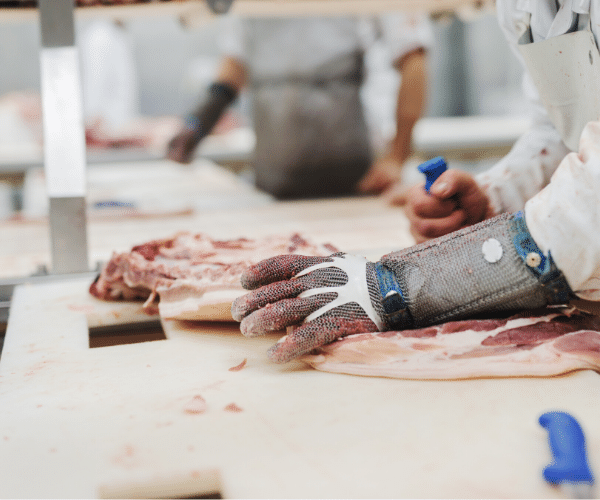Over the years, the trends in buying meat products have continually evolved. The consumers’ perception of food safety concerns, healthy eating, and other trends have challenged meat processors to meet these evolving demands.
As the meat processing industry develops, meat processors know the importance of keeping up with emerging trends. These trends require advanced approaches.
As any meat processors could attest to, developing and implementing new strategies to keep up with emerging issues can be overwhelming and complicated.
In today’s post, we’ll discuss some of the food safety challenges that the meat processing industry is facing. We’ll also shed some light on how to overcome these challenges successfully.
Meat Processors Must Comply with Ever-Changing Regulations

The United States Food Safety Inspection Services (FSIS) is the governing body above all meat and poultry processing companies in the country.
In the mid-’90s, the organization has rolled out its requirement on reducing hazards when it comes to meat processing.
The requirements include:
- All meat and poultry processing facilities strictly implement official sanitation standard operating procedures.
- All slaughter facilities hold E.coli testing.
- All slaughter facilities and raw meat distributors meet the founded pathogen reduction standards for diseases such as salmonella.
- All meat and poultry facilities strictly implement a pathogen reduction program.
Since then, these laws have continually developed. The government has also implemented more rigorous requirements. These laws aim to help consumers in the prevention of foodborne diseases. The regulations set by FSIS also ensure that all ready-to-eat meat and poultry items are safe to consume.
Meat Processors’ Solution to Changing Regulations
As the ever-changing regulations continue to encourage meat processors to follow food safety guidelines, some companies may find it challenging to keep up. However, failing to abide by these current guidelines will put the safety and lives of consumers at risk – leading to devastating outcomes for their reputation and bottom line.
When it comes to keeping up with the changing food safety regulations, meat processors have adapted the efficient utilization of information and technology.
Meat processing companies that use food safety applications and software ensure that their operations are highly informed and dynamically automated. These advantages help them implement industry best practices and compliance standards.
When used efficiently by meat processing companies, information, and technology can attain true transparency across the company and minimize the threat of food safety issues. Thus, many experts agree that it’s the path to efficient use of data, reduced risk of human error, and a preventive and proactive food safety approach.
Consumers’ Buying Decision
News and media strongly influence the buying mentality of consumers when it comes to food products. As more and more consumers become interested and connected to eating healthy, more nutritional research and health studies are being made available to the public.

All the public information about food safety reveals essential insights into the items we consume.
However, not all information bring a positive effect on meat products.
For example, a preliminary study by the American Heart Association linked red meat consumption to an increased risk of heart conditions.
Consumers may only absorb the headlines and not the full context of the story. Meat processors can turn this around by ensuring that consumers understand the research studies in their entirety. In the same example, various studies prove that red meat is rich with vitamins, antioxidants, minerals, and other nutrients.
As a meat company, make sure that you refute false claims about your products while at the same time presenting real facts on how your products contribute to a healthier lifestyle.
Increased Costs of Raw Materials
The pricing for raw materials in the meat industry continually fluctuates. One of the most significant contributors to this fluctuation is the cost of animal feed.
Meat processors solve this issue by ensuring that there’s a balance between the cost of raw materials and the demand for protein products. Assess your need for raw materials and compare them to the number of consumers seeking protein-rich food items.
